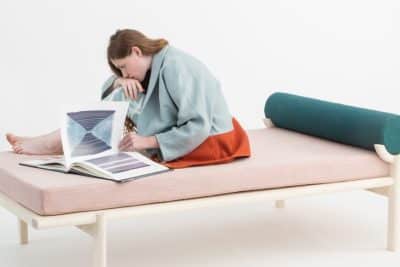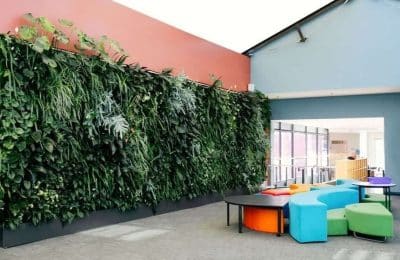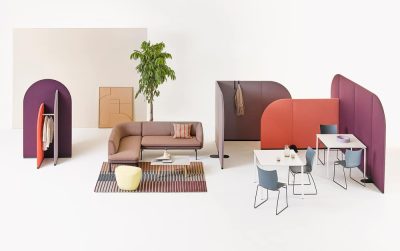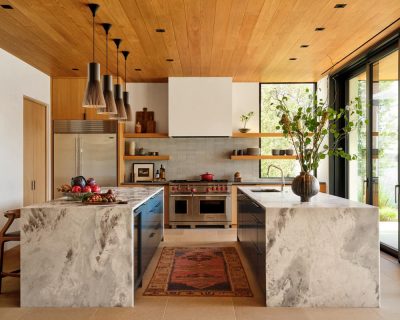KOYORI is a new Japanese design brand of sophisticated lifestyle products that embody the distinct sense of Japanese aesthetics. Collaborating with contemporary designers from across the globe, KOYORI crafts quality furniture and interior accessories with elegant designs that transcend borders. The official launch of KOYORI will take place during Milan Design Week in June, 2022.
The KOYORI brand is being built together with some of Japan’s leading furniture and interior décor manufacturers. The brand identity was formed under the watchful eye of the iconic British product and furniture designer, Jasper Morrison, in the role of Brand Directing Advisor, with Sebastian Fehr as co-designer. KOYORI, which stands for ‘twisted paper cords’, is the primary material of Mizuhiki, the durable and decorative paper strings traditionally used in Japan for wrapping gifts, especially on festive and ceremonial occasions.
Crafted using outstanding Japanese manufacturing technology, KOYORI products are designed to be cherished for generations, and to bestow happiness on their owners. Five chairs are presented in the brand’s first collection: Kawara Armchair, Musubi Armchair, and Shaku Chair, designed by the Paris-based brothers, Ronan & Erwan Bouroullec, as well as Miau Armchair and Edaha Chair from GamFratesi, the Danish-Italian design duo.
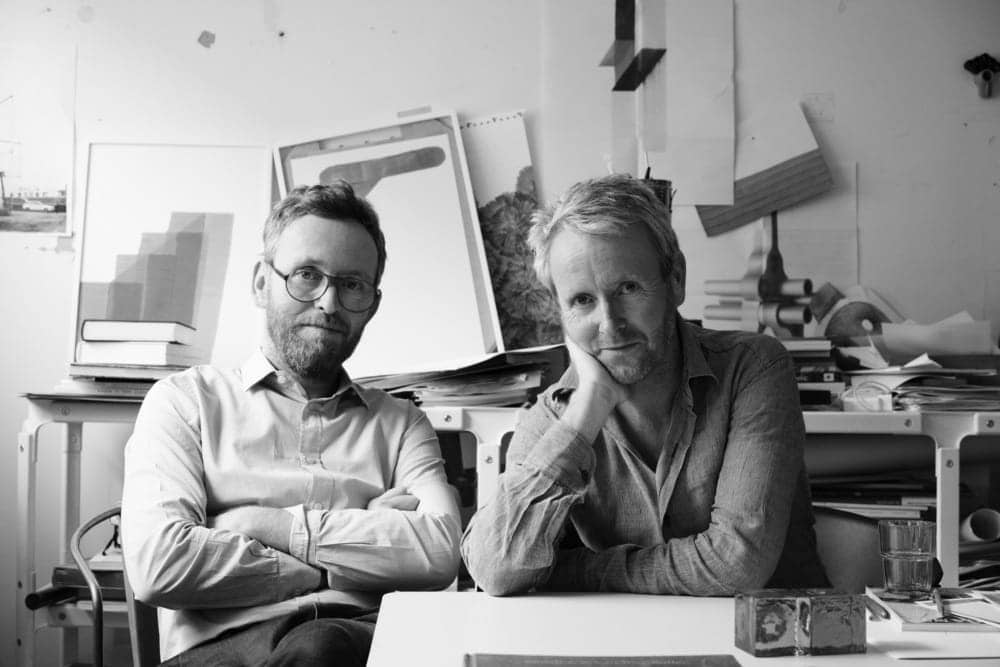
According to designers Ronan & Erwan Bouroullec, their goal with the KOYORI project was to invent something new, while at the same time emphasizing the quality and specific technical expertise of the manufacturers.
“We wanted the project to be a collective intelligence, working together with manufacturers to make the most of their skills. We tried to translate the essence of working with masters of wood into the design,” says Ronan Bouroullec.
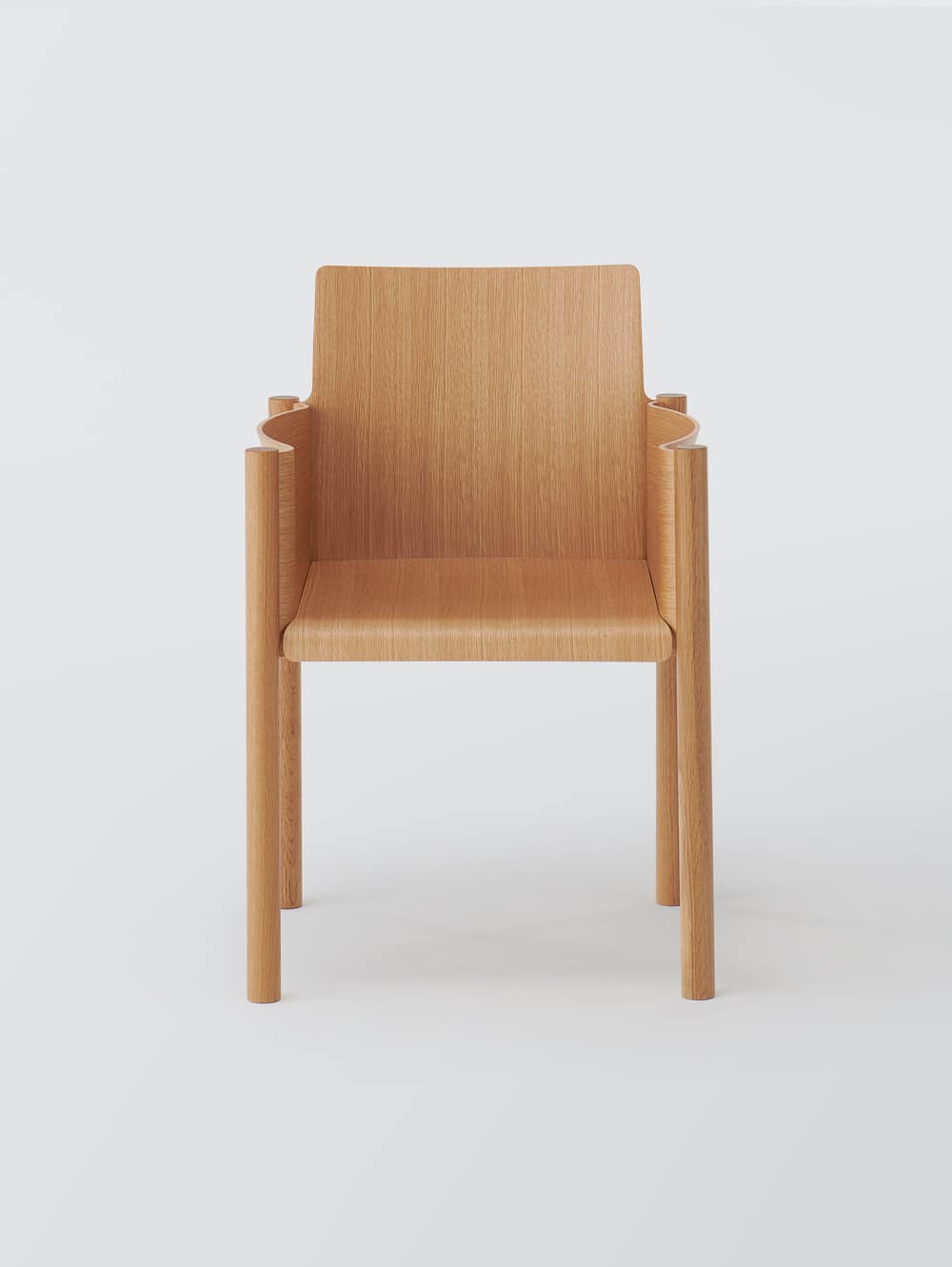
The Kawara Armchair features classic and simple lines with a new design created in wood. Plywood is used for creating a three-dimensional curved backrest and armrest. These soft curves enhance the aesthetic appeal of the chair, while also contributing to its strength and stability and adding extra sitting comfort. This charming and comfortable chair is perfect around a dining or meeting table, where people tend to linger for hours.
“For the Kawara Armchair, we wanted to design a large, box-like dining chair that provides the comfort of sitting in a very soft shell. We imagined this charming chair around a dining or meeting table. It is available in different colors, upholstered in leather or textile,” says Ronan Bouroullec.
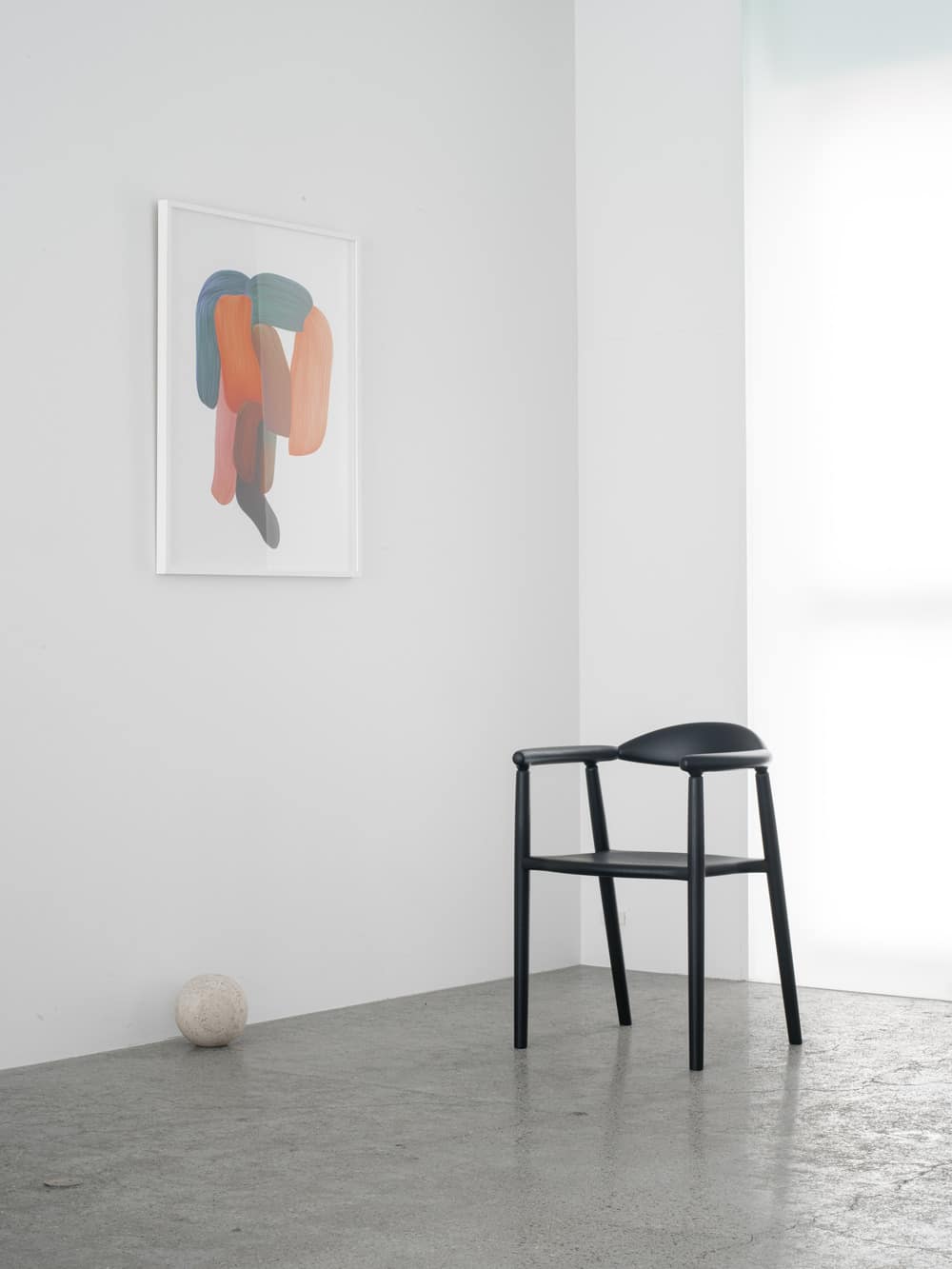
The Musubi Armchair design emphasizes the beautifully and efficiently sculptured parts of wood. The backrest, arms, and the seat are all sculptures in their own right, assembled together as one.
“We wanted to express a beautiful and sensual quality that renders the chair pleasant, not only when you sit in it, but also when you simply touch it,” says Ronan Bouroullec.
By carving out solid wood using both wood-bending and 5-axis NC cutting techniques, the backrest and armrest achieve a sculptural, three-dimensional shape. The chair features a characteristic dented shape between the backrest and armrest, and between the armrest and the legs. With the appearance of being tied together, each part is joined with high precision and technique.
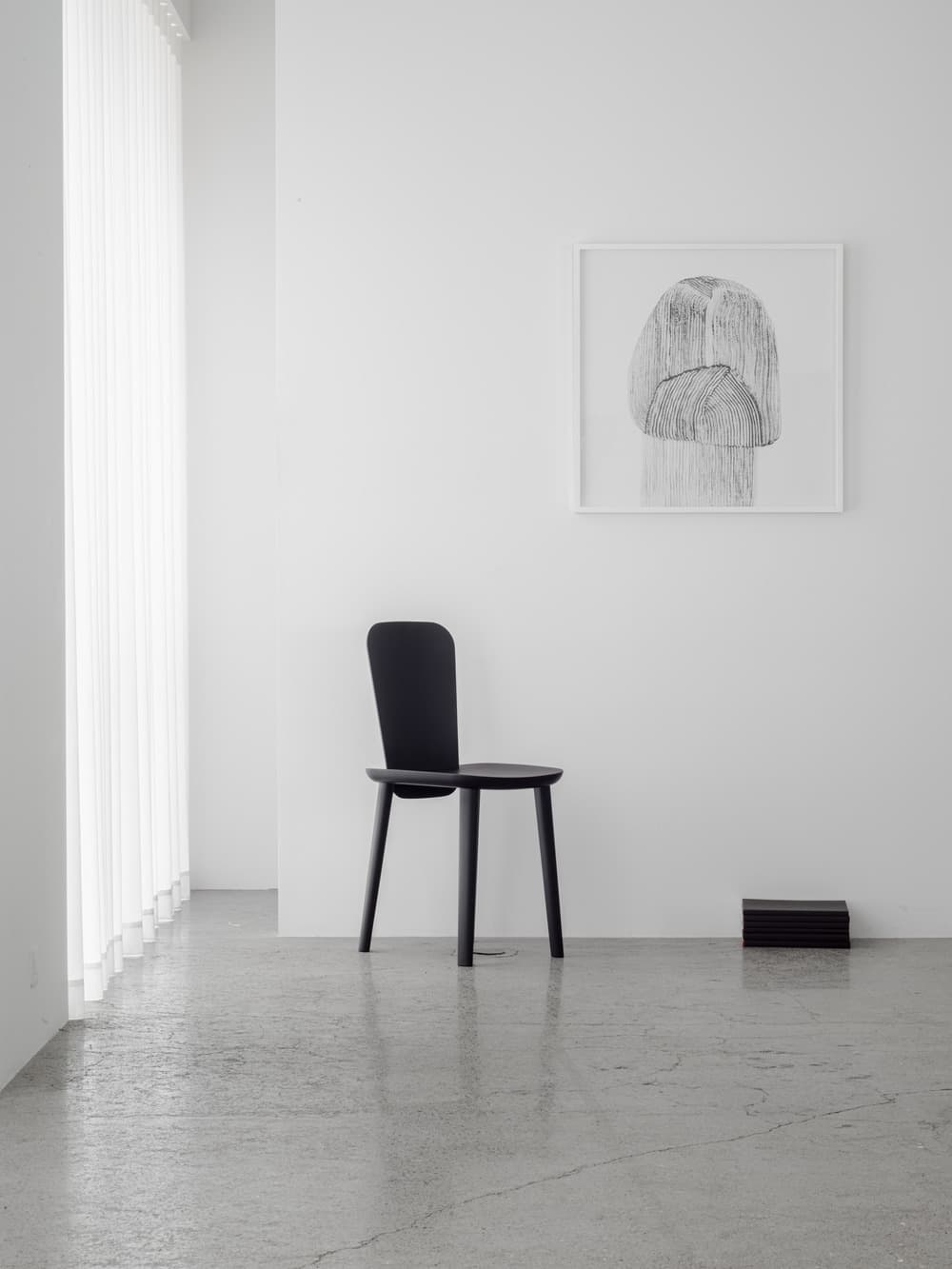
The Shaku Chair is a “very warm, beautiful, and simple chair, kind of narrating history. It could have existed centuries ago, but here it’s more refined and specific,” Ronan Bouroullec says.
Its relatively high back makes this chair comfortable to sit on, even if it is relatively small. High processing accuracy creates an expressive modeling experience, where it appears as if the seat base is holding the backrest. The three-dimensional curves of the seat and backrest snuggle up to the body to ensure maximum sitting comfort.

For GamFratesi, collaborating with KOYORI was an opportunity to interpret wood in its various forms, in a broad and honest way. Both the Miau Armchair and Edaha Chair are beautiful objects that can be considered reinterpretations of Danish traditions and design.
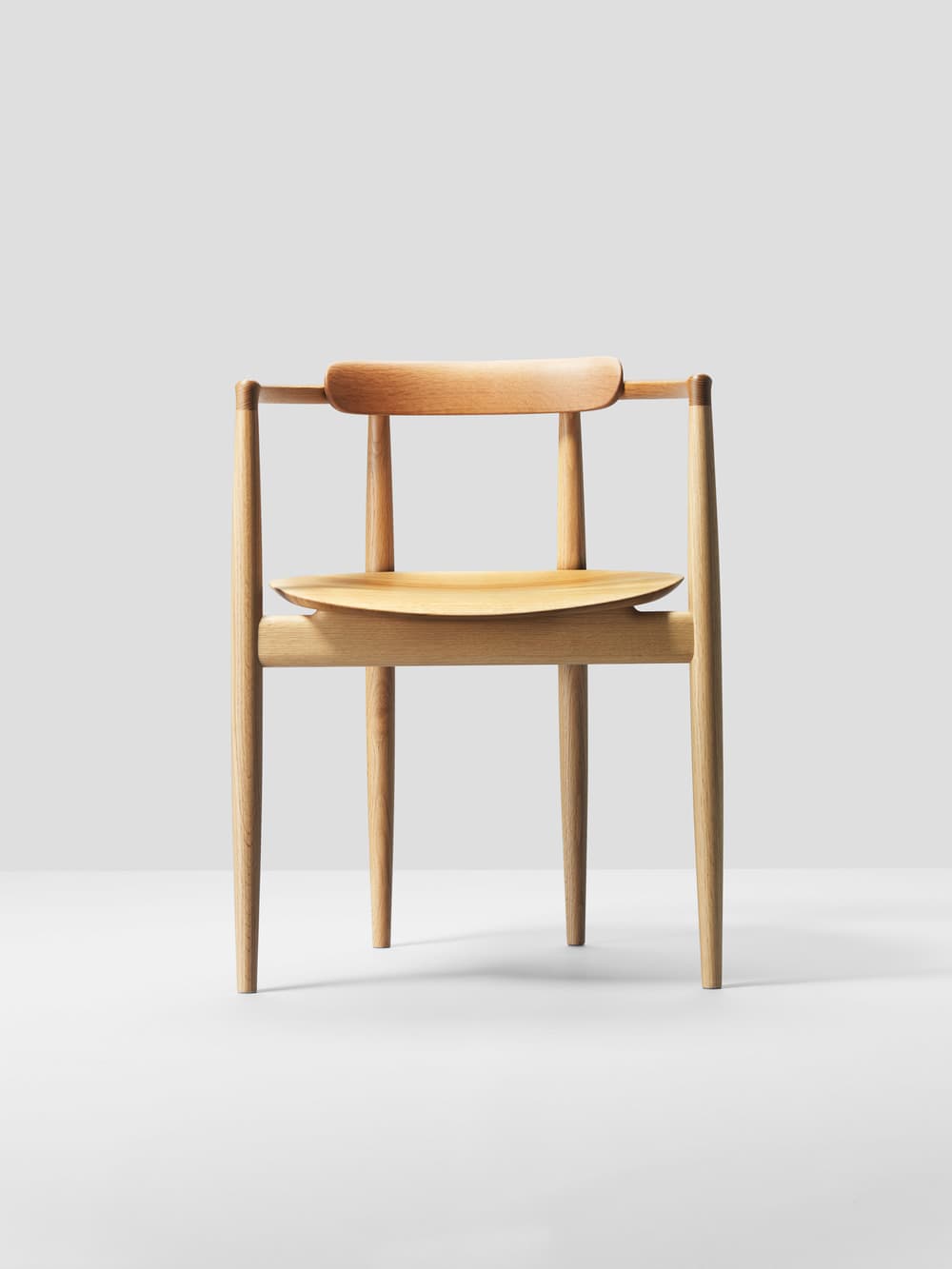
“With the Miau Armchair, we wanted to create a humanly warm and gentle design with a feline motif. Hence the series of minute details, particularly the armrest that invites you to be caressed and to discover the beauty of this material,” says GamFratesi. The armrests and the backrest are made of a single bentwood, creating a beautiful, uniform, and more durable structure than if it had been when constructed from separate pieces connected together.”
For GamFratesi, nature is always an element of reference and a source of inspiration, as is apparent in the Edaha Chair.
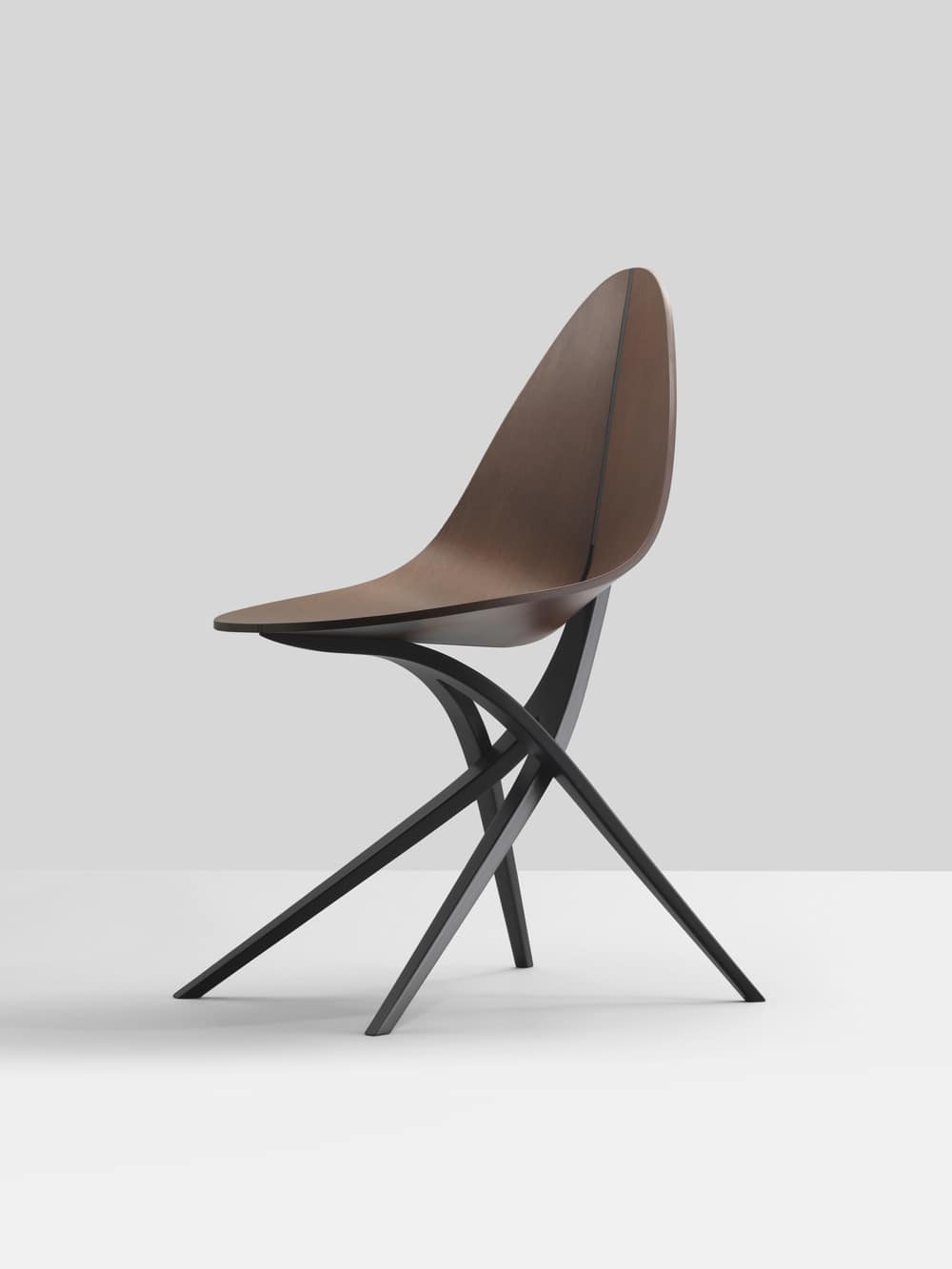
“The branch (the structure) and the leaf (the veneer) were the central elements of the project. We wanted to create a structure that gently supported the suspended seat, just like a leaf on a branch. It was a design entirely made with veneer wood, but with different processing and techniques designed to express the beauty of nature through an industrialized, yet natural chair,” says GamFratesi. “Koyori represents a story about Japan. Our products are chapters, and each chapter tells a part of that story. Our hope is that people will feel the respect, passion, and quality radiated by the craftsmanship of the Koyori products.”
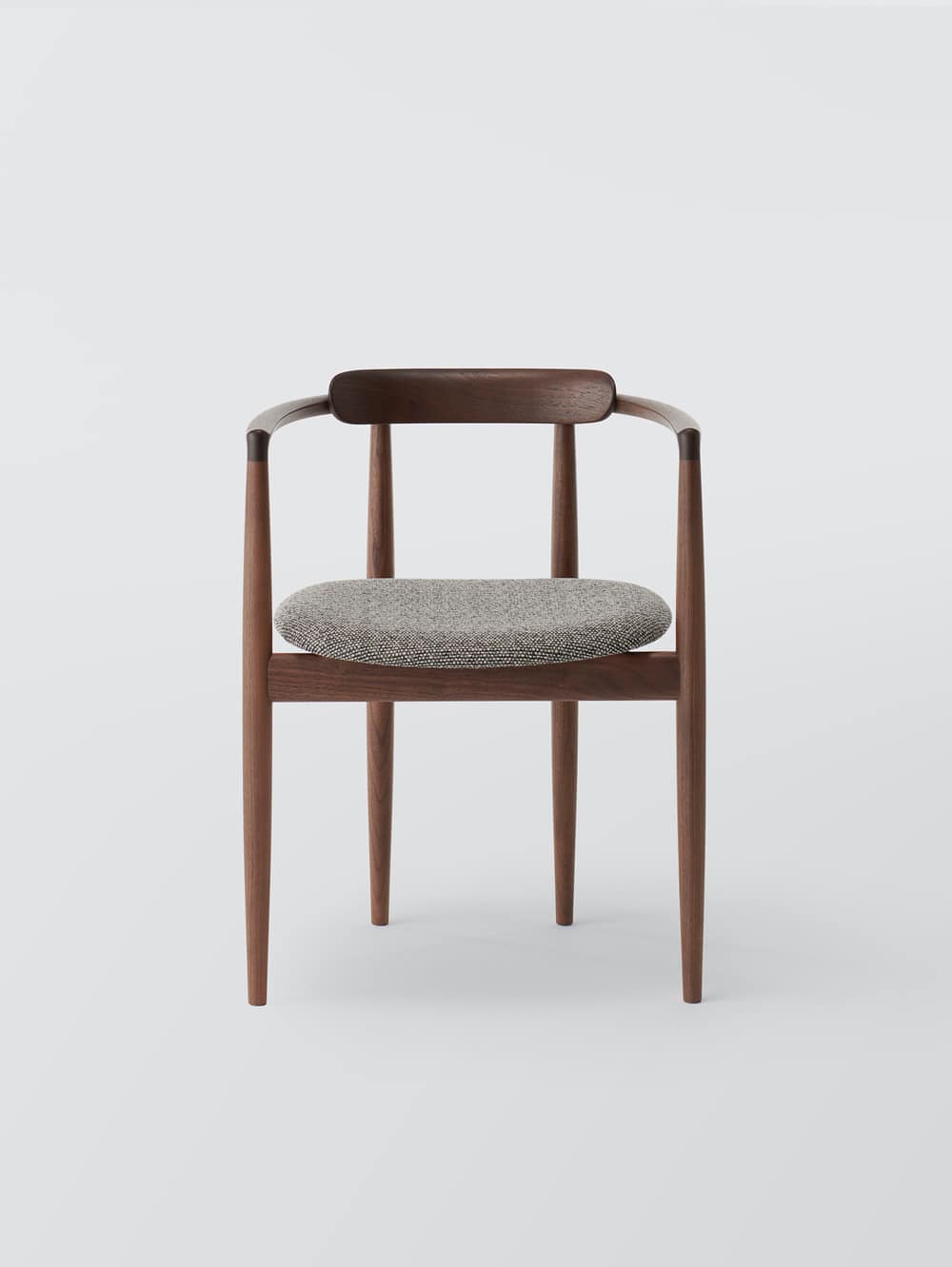
Koda, Executive Director at KOYORI, adds: “The simplicity and subtle beauty of Japanese products that radiate Japanese aesthetics are the result of the diligence, passion, and devotion of the craftsmen. Design enthusiasts will appreciate the perfectionism, commitment, and thoughtfulness in the KOYORI range that, together, render every product unique.”
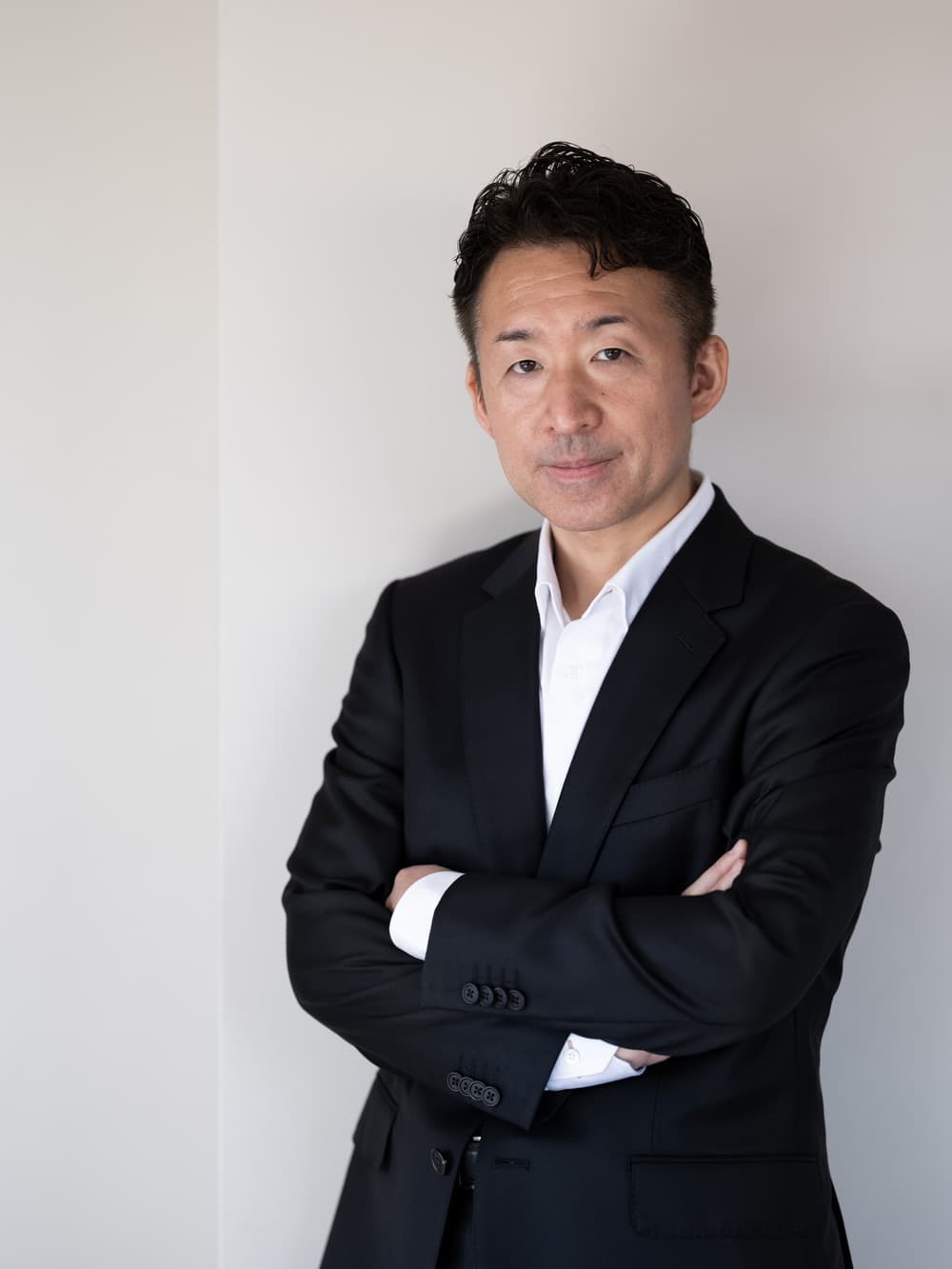
Sustainability and transparency
KOYORI carries the legacy of the beauty, creativity, and authenticity of Japanese craftsmanship forward, conveying it to the international market. In addition to creating products that last for long periods of time, KOYORI ensures that production and delivery processes are sustainable and contribute to the company’s reputation as a leading brand with a culture of transparency. As a first step, to establish carbon footprint transparency, KOYORI will measure the carbon footprint generated by its products and will publish the results on its website. KOYORI also endeavors to take further steps to reduce the carbon footprint across its entire product life cycle.
The design exhibition will be held during Milano Design Week on June 3-12 at the Triennale Milano art and design museum.





